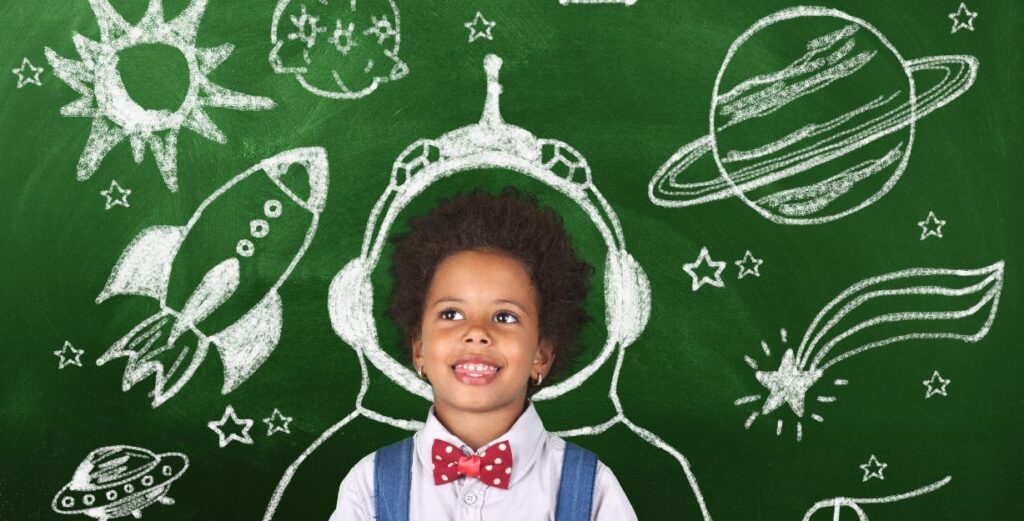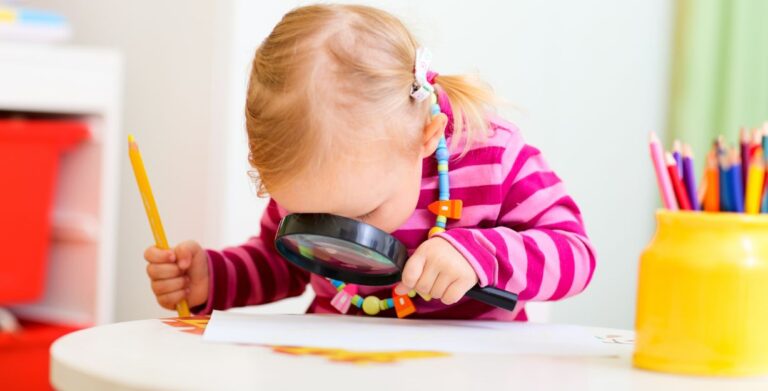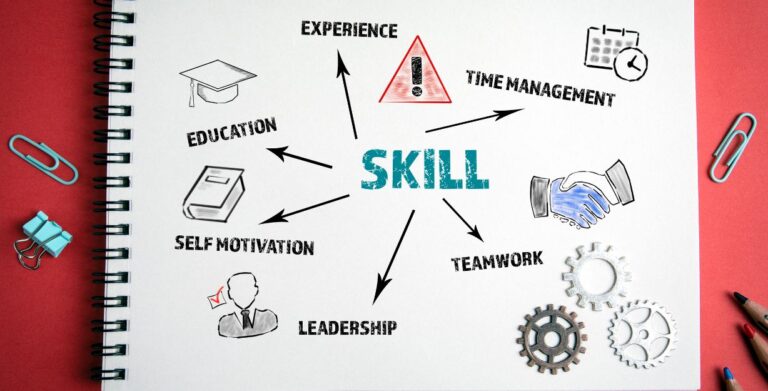which of the following describes a benefit of creative expression in early childhood?

Creative expression is a fundamental aspect of early childhood development, offering numerous cognitive, emotional, and social benefits. Whether it’s through drawing, storytelling, dancing, or imaginative play, these creative outlets help young minds explore their world, understand their emotions, and connect with others. But what makes creative expression so critical during these formative years? Why should parents and educators prioritize creativity just as much as traditional learning?
Let’s dive deeper into how creativity can shape a child’s overall development.
Understanding Creative Expression in Early Childhood
Creative expression in early childhood refers to activities that allow children to express their ideas, feelings, and experiences in imaginative ways. It includes a broad spectrum of activities like painting, singing, storytelling, building with blocks, and role-playing.
These creative endeavors are not merely “fun” but crucial to developing a child’s brain and personality. Whether a child is finger-painting or pretending to be a superhero, they are exploring new ideas, learning how to solve problems, and finding ways to express complex emotions they may not yet be able to verbalize.
The Cognitive Benefits of Creative Expression
One of the most profound effects of creative expression in young children is on cognitive development.
Enhancing Problem-Solving Skills
When children engage in creative activities, they encounter challenges—like figuring out how to build a tall tower with blocks without it falling. These challenges encourage them to think critically, assess situations, and devise innovative solutions. Creative expression strengthens their ability to approach problems with an open mind.
Encouraging Critical Thinking and Decision-Making
Creative tasks often require children to make choices. For instance, should they use the red or blue crayon for the sky? Should their story include a dragon or a friendly dog? These decisions help develop critical thinking skills as children weigh options and outcomes, a practice that will benefit them academically and in life.
Supporting Early Literacy and Language Development
Storytelling, whether through words or pictures, enhances language skills. When children create their own stories, they experiment with new vocabulary, understand narrative structures, and improve their ability to communicate ideas. Even simple drawings are a form of “pre-writing” that lays the groundwork for literacy.
Emotional Development Through Creativity
Encouraging Emotional Self-Expression
Children, especially younger ones, often struggle to articulate their emotions verbally. Through drawing, painting, or acting, they can express feelings they may not yet understand. A child upset about something at home might draw a picture of a storm, symbolizing their inner turmoil. These outlets allow them to release pent-up emotions in a healthy, constructive way.
Building Emotional Intelligence and Resilience
Creativity nurtures emotional intelligence by helping children recognize and understand their own emotions and the feelings of others. Role-playing, for example, enables them to put themselves in someone else’s shoes, fostering empathy. This practice helps build resilience as children learn to navigate both positive and negative emotions.
Creative Expression as a Tool for Stress Relief
Art and creative play can also act as a stress reliever. Engaging in a favorite creative activity helps children relax, channel their energy positively, and focus on something that brings joy, alleviating anxiety or frustration.
Social Benefits of Creativity in Early Childhood
Developing Interpersonal Communication Skills
Many creative activities, like group storytelling or collaborative art projects, require children to communicate with each other. These interactions build essential social skills, teaching them how to share ideas, listen to others, and work together toward a common goal.

Learning Cooperation and Teamwork
Group activities encourage teamwork, allowing children to learn how to cooperate, share responsibilities, and collaborate on creative endeavors. Whether they are constructing a LEGO city together or performing a play, these experiences are invaluable for social development.
Encouraging Empathy and Understanding Through Role Play
Imaginative role-playing enables children to take on different perspectives. By pretending to be a doctor, teacher, or parent, they begin to understand the feelings and experiences of others, enhancing their empathy and social understanding.
Fostering Self-Confidence and Independence
Creative Activities Promote Self-Reliance
When children engage in creative projects, they learn to rely on their own ideas and skills. Completing a drawing or building a structure independently fosters a sense of accomplishment, boosting their confidence.
Confidence in Making Decisions and Taking Initiative
Creativity encourages children to take risks and make decisions without fear of failure. This autonomy in creative expression translates to a stronger sense of independence in other areas of their lives, helping them grow into confident individuals.
Physical Development Through Creative Expression
Fine Motor Skills Development
Activities like drawing, cutting paper, or molding clay help children develop fine motor skills. These activities require precise hand movements that improve hand-eye coordination and dexterity.
Enhancing Hand-Eye Coordination
Whether it’s threading beads or playing a musical instrument, creative activities refine a child’s ability to coordinate what they see with how they move their hands, an essential skill for tasks like writing or using tools.
Improving Spatial Awareness
Building with blocks or playing with puzzles improves spatial reasoning, helping children understand how objects fit together in space and how they relate to their physical environment.
The Role of Imagination and Innovation
Creativity Sparks Imaginative Play
Imagination is a key component of creativity, and when children are encouraged to be creative, they develop a rich inner world of ideas. This imaginative play is not only fun but essential for brain development, helping children to think abstractly and innovate.
Innovation and Development of New Ideas
Creative expression is at the heart of innovation. Children who engage in creative activities are more likely to think outside the box and come up with novel solutions, a trait that will serve them well throughout their lives.
The Impact of Creative Expression on Academic Success
Creativity Fosters a Love for Learning
When children are encouraged to explore and create, they develop a natural curiosity about the world. This curiosity leads to a love of learning that can positively impact their academic performance, particularly in subjects like math and science, where creative problem-solving is essential.
Children Who Engage in Creative Activities Perform Better Academically
Research shows that children who participate in creative activities tend to perform better in school. Creative thinking helps them grasp new concepts and see connections between different subjects, enhancing their overall academic achievement.
Creativity as a Cultural and Identity Builder
Exploring Cultural Heritage Through Creative Activities
Creative expression often reflects cultural stories, traditions, and values. Engaging in art, music, or storytelling related to one’s cultural background helps children connect with their heritage and understand their identity.
Understanding Self-Identity Through Art and Expression
Through creative activities, children explore their individuality and develop a strong sense of self. Whether drawing a family portrait or writing about their day, these activities help children articulate who they are and what matters to them.
Long-Term Benefits of Early Creative Expression
How Early Creativity Impacts Adulthood
The benefits of creative expression extend well beyond childhood. Adults who were encouraged to be creative as children tend to have better problem-solving skills, greater emotional intelligence, and more adaptive thinking.
Creativity as a Lifelong Skill
Creativity is not just for childhood—it’s a lifelong asset. Adults who practiced creative expression in their early years are often better at thinking outside the box, coming up with new solutions, and adapting to changes in both personal and professional settings. Whether they pursue careers in the arts, sciences, or business, creative thinking empowers individuals to thrive in innovative, ever-evolving environments.
Practical Ways to Encourage Creativity in Children
Parents, teachers, and caregivers play a vital role in fostering creativity in young children. There are numerous ways to encourage creative expression, both at home and in educational settings.
How Parents and Educators Can Foster Creativity
Encouraging creativity can be as simple as providing the right environment. Offer a variety of materials—paints, crayons, paper, building blocks, or even found objects like leaves and stones—for children to explore and use in imaginative ways. Let them engage in free play, where they have the freedom to create without rigid instructions or expectations. A balance between structured activities and open-ended play is key to nurturing creativity.
Importance of a Supportive and Open Environment
Creativity flourishes in a supportive environment. Children need to feel safe to experiment and make mistakes without fear of judgment. Praise their efforts, not just the final product, and encourage curiosity by asking open-ended questions like “What do you think will happen next?” or “Why did you choose those colors?” This promotes creative thinking and gives children the confidence to explore their ideas.
The Role of Technology in Modern Creative Expression
In today’s digital world, technology plays a significant role in how children express their creativity. From digital drawing apps to music-making software, modern tools can greatly expand the ways children engage in creative activities.
Digital Tools That Enhance Creativity
There are many kid-friendly apps and programs that can help children experiment with art, music, coding, and storytelling. Platforms like Toca Boca or Minecraft, for example, allow children to build, design, and create virtual worlds, combining creativity with problem-solving in a digital context.
Balancing Screen Time with Hands-On Creative Activities
While technology offers fantastic tools for creativity, it’s essential to balance screen time with real-world, hands-on creative activities. Encourage children to spend time drawing, building, or crafting with physical materials. This helps them develop tactile skills and a sense of accomplishment from creating something tangible.
Overcoming Barriers to Creative Expression
Despite the benefits, some parents and educators may face barriers when trying to encourage creativity, such as limited time, resources, or understanding of how to foster creative activities.
Addressing Challenges Such as Lack of Time or Resources
You don’t need expensive art supplies or long hours to inspire creativity. Many creative activities can be done with everyday household items, like turning a cardboard box into a spaceship or using old magazines for a collage. Additionally, setting aside just a few minutes a day for creative play can make a significant difference in a child’s development.
Encouraging Creativity in Children with Diverse Needs
It’s important to remember that all children, including those with special needs, can benefit from creative expression. Adapt activities to suit their abilities and interests, and provide additional support where necessary. For example, children with motor challenges might enjoy larger, easier-to-handle materials, while those with sensory sensitivities may prefer quieter, less stimulating creative environments.
Wrap Up
Creative expression in early childhood is far more than a pastime—it’s a crucial element of cognitive, emotional, social, and physical development. Through creative activities, children learn to solve problems, express emotions, build relationships, and discover their identity. The benefits extend into adulthood, shaping innovative thinkers, resilient individuals, and lifelong learners. By encouraging creativity from an early age, parents, caregivers, and educators are not only nurturing artistic talents but also fostering essential life skills that will help children thrive in all areas of life.
FAQs
1. How does creative expression benefit a child’s brain development?
Creative expression enhances brain development by improving problem-solving, critical thinking, and language skills. Activities like storytelling and drawing stimulate cognitive functions, helping children process information and develop new ideas.
2. Can creativity improve academic performance?
Yes, studies have shown that children who engage in creative activities tend to perform better academically. Creativity encourages critical thinking and curiosity, which are essential for success in subjects like math, science, and literacy.
3. What are simple ways to encourage creativity at home?
You can encourage creativity by providing basic materials like crayons, paper, and building blocks, allowing your child to engage in free play, and creating a supportive environment where they feel comfortable experimenting and making mistakes.
4. How does creativity help with emotional development?
Creative activities allow children to express emotions they might not yet be able to verbalize. Whether through drawing or storytelling, they can explore and process feelings, which builds emotional intelligence and resilience.
5. Is technology harmful to creativity?
Technology is not inherently harmful to creativity, but it’s important to balance screen time with hands-on activities. Digital tools can be valuable for creative expression when used alongside traditional creative activities like painting, building, or imaginative play.






